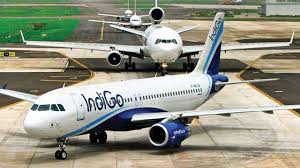IndiGo reported only 22% flights on-time at six metro airports. Air India’s OTP stood at 18.6% on Monday.
Within hours of an IndiGo passenger hitting the pilot of the aircraft, came the videos of IndiGo passengers of a diverted flight sitting on tarmac and having dinner. This prompted the next set of meme fest on the Internet. The incident also raised questions on the safety and security protocols at the airport amid fog. When the security forces do not allow a ramp-to-ramp transfer and mandate passengers who have deplaned to go through security checks again, passengers sitting on the tarmac was unthinkable.
A routine maintenance-linked closure of the runway got extended beyond the planned period and a higher-than-ever blanket of fog rendered both take-offs and landings impossible for some hours. Coupled with airlines not updating passengers adequately, long hours inside the plane became a perfect recipe for irritation, if not disaster. From a first-time flyer to crew and commoner to stars, everyone who tried taking a flight over the last two days has a story to share.
The On Time Performance dropped drastically, with IndiGo reporting only 22% flights on-time at six metro airports, AIX Connect (erstwhile AirAsia India) reporting just over 30% flights on-time. Air India’s OTP stood at 18.6% on Monday. While the figures are for the top six airports in the country, the top six cover over 70% of all departures either at arrivals or departures. IndiGo has been operating an average of 1760 domestic departures daily; at 22% only about 387 flights would have been on time, provided the airline did operate as many. Indications are that the airline did not — nor did any other airline.
Read More: Oil companies may cut petrol, diesel prices by ₹5-10 next month
Drop in departures
Sample this — from the first until the thirteenth of January, India saw an average of 2883 domestic departures and carried 428370 domestic passengers on those. On January 14th, the departures dropped to 2552 with passenger numbers down to 381259. The average load factors remained the same. The next day, i.e. January 15th, the departures were low again at 2598 with 390216 domestic passengers.
The two days have seen a reduction in flight by about 330 flights and an average of 40,000 fewer domestic passengers flying out. These passengers were probably blessed if they were informed about the cancellations while benign away from the airport, unlike multiple cases where flights were cancelled after being inside the aircraft for long hours.
The load factors have remained high as airlines tried accommodating stuck passengers on to next available flights wherever possible. That means there were fuller flights, waiting on the tarmac, awaiting its turn to fly and in some cases boarded but awaiting pilots or the crew.
In December last year, 1935 passengers were denied boarding, over 35,000 were impacted by cancellations and 3.64 lakh passengers impacted by delays for which airlines paid Rs. 173 lakhs, Rs. 105 lakhs and ₹544 lakhs respectively.
However, the delays of the last two days will not have any financial implication on the airline since there are force majeure and anything which is beyond the control of the airline will not be compensated. The fog induced delays are force majeure. What is questionable though is the ability of the airline to operate the flight had the crew been available on time and if that was also linked to fog or shortage?
Read More: 500 Electric Buses To Be Flagged Off In Delhi On Jan 23; Check Details Here
Change needed in procedures
As the regulator and minister step in to damage control, service notice to the airline and step in with possible solutions, the question that needs to be raised is the procedure to hole up the passengers inside the plane for so many hours, understandably without food. Airline seats do not offer any luxury and have limited recline. There are passengers who have infants or senior citizens travelling with wheelchair assistance who find it hard to sit for longer hours.
If the airline deplanes the passengers and allows the passengers to be in the terminal, the passengers have access to washrooms and more importantly food. With most planes in India not having a charging facility, the terminal also provides much needed electricity points for charging devices. Indeed this comes at the cost of losing the sequence and it could also mean going through the security one more time, something which is a bottleneck especially at such times but is any day better than being stuck without updates.
It will need a huge shakeup on both the airline, operator, Airports Authority of India and BCAS (Bureau of Civil Aviation Security) to ensure that things move from the current way to a more humanely possible way and that it happens soon.
The writer is an aviation analyst



































